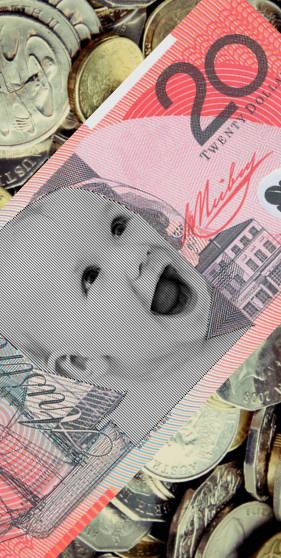Ratio change to slug parents
 Many families will pay $60 more for childcare each day when new staffing rules are applied next year, which does little for Tony Abbott’s pledge to make daycare cheaper.
Many families will pay $60 more for childcare each day when new staffing rules are applied next year, which does little for Tony Abbott’s pledge to make daycare cheaper.
From January 1 next year, daycare centres will have one carer for every five two-year-olds and one for every 11 children aged between three and five.
It means they will have to take on more carers, as current rules allow more children per adult.
South Australia currently allows just one carer for every 10 two-year-olds, and in NSW one carer can look after eight.
But fees have already risen 8 per cent in a year, and childcare operators say under new rules fees will jump by an average of $60 a day in Sydney, $28 in Adelaide and $7 in Melbourne.
Australian Childcare Alliance president Gwynn Bridge has called on the federal government to postpone the “exorbitant” staffing changes.
“Parents can’t afford to pay for them so we’d like a deferral until the government can pay for them,” she told News Corp reporters.
The government is set to wear the costs too, with taxpayer rebates over $5.6 billion already putting pressure on the federal budget.
But, in shelving the expensive Paid Parental Leave scheme, Prime Minister Tony Abbott the money saved would go to reducing the cost of childcare.
“We’re going to have much more affordable childcare with more money in parents’ pockets and that’s going to be good for families,” he said during a visit to a Sydney daycare centre.
“All too many families at the moment find themselves in the position where one parent is working just to pay the childcare.”
Childcare NSW president Nesha O’Neil said it will hit some families hard.
“This will impact on fees by up to 60 per cent for parents, so fees could go up to $160 a day,” she said.
“Some centres will have to reduce the number of children they are allowed to care for, which means fees will go up for the remaining children.”
Early Childhood Australia said the staffing ratio changess in Victoria, South Australia and NSW brings them in line with other states.
“The lower ratios mean staff have more time with individual children,” she said.
Mr Abbott has hinted that big business will still be slugged with the $2.5bn levy originally intended to fund the Paid Parental leave scheme, but there is no word yet on how it could be used to ease the strain on working families.







 Print
Print